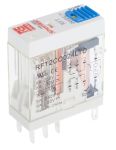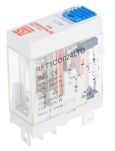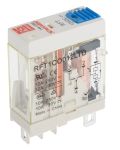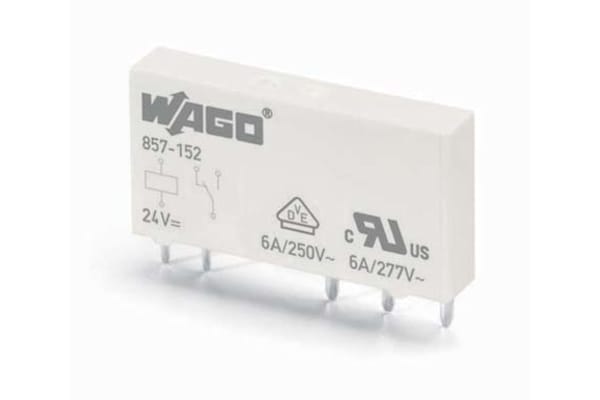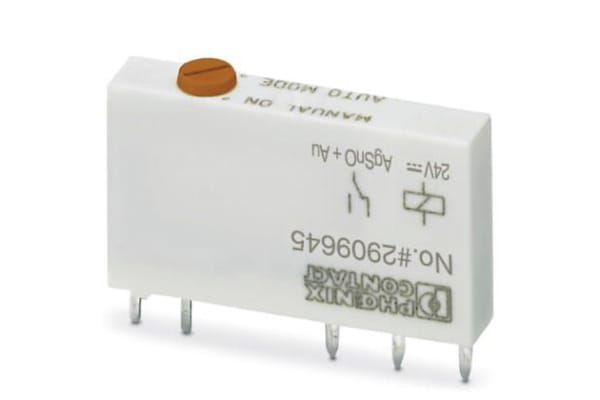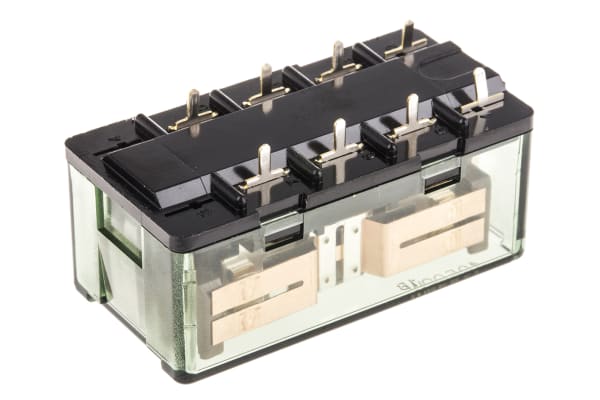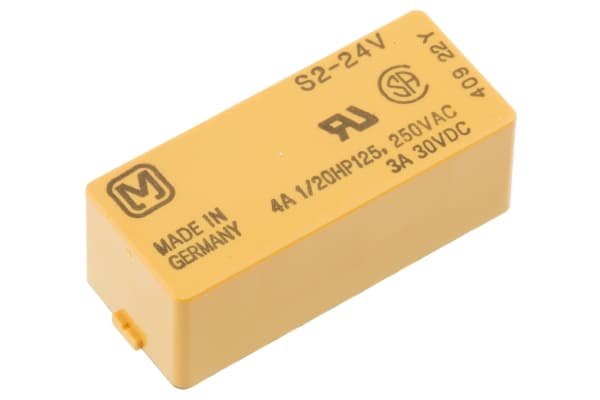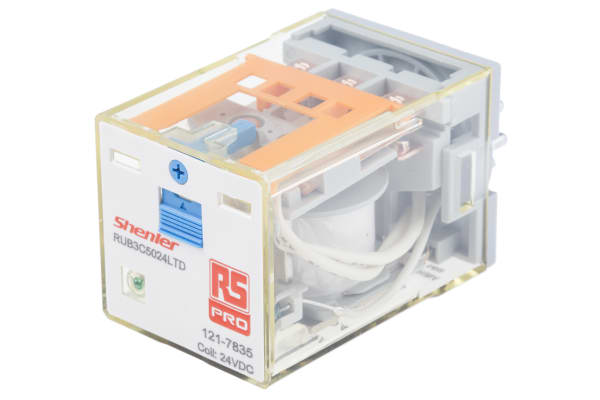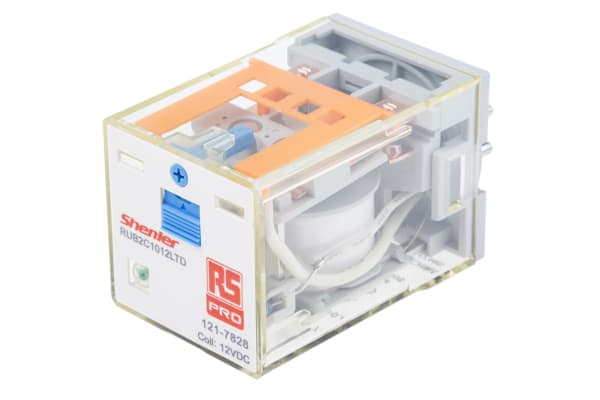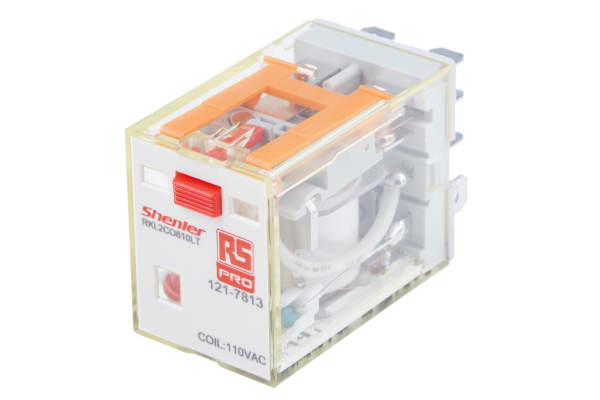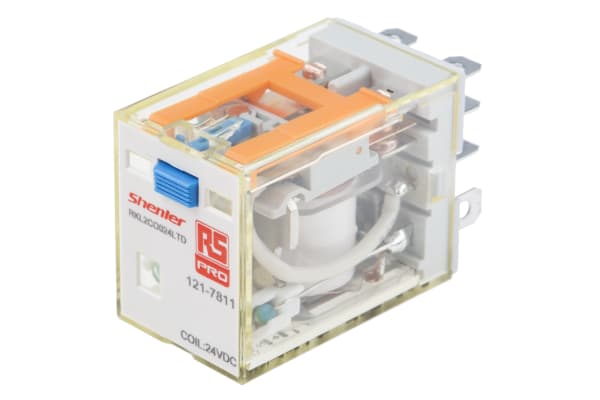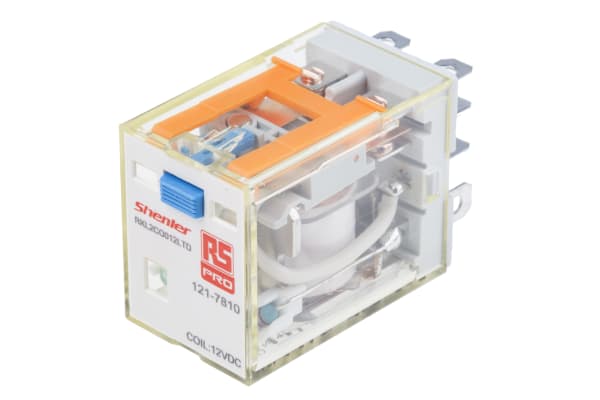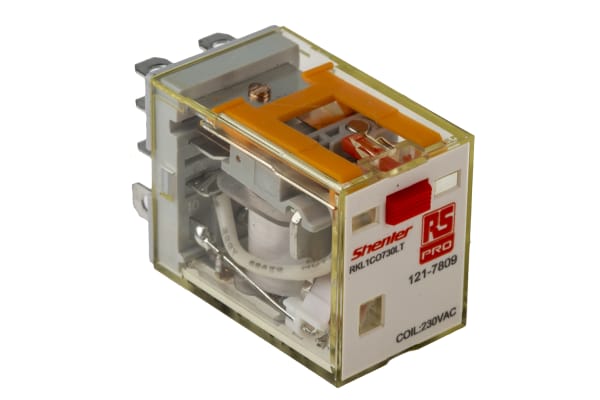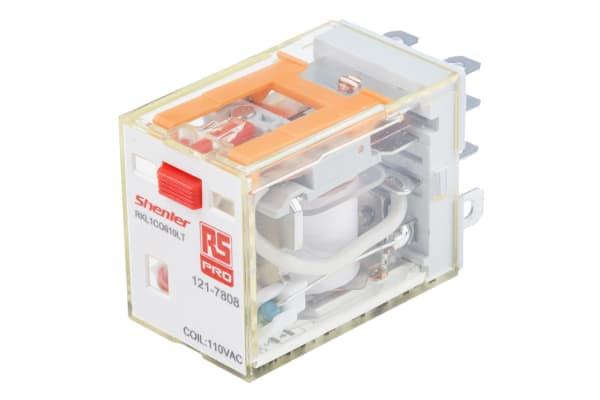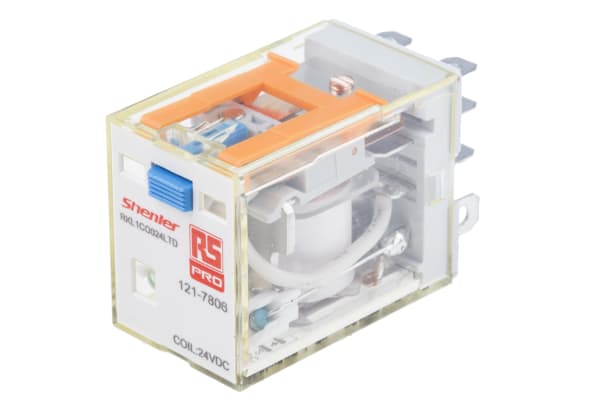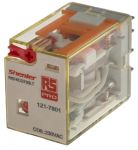Non-Latching Relays
Relays are electrical switches that are operated by electrical impulses with the primary function to open and close a circuit, they can also be referred to as industrial switches. There are 2 main types available, latching and non–latching relays.How do non-latching relays work?Non-latching relays are in a normally closed (NC) position and will stay in this state without power. When power passes through the circuit, the relay switched to a normally open (NO) position by using an internal coil to generate a magnetic force, holding this NO position. Once the current is turned off, it returns to the NC position. This makes non-latching relays well suited to push-button applications like keyboards and micro-controller input buttons.What are non-latching relays used for?Non-latching relays are highly durable and versatile components, making their performance long lasting and suitable for use in a wide range of applications, such as:Automotive enginesHousehold appliancesIndustrial machineryMedical equipmentTelecommunications equipmentWhat is the difference between latching and non-latching relays?Both types of relays in similar in design and function, however, a significant difference between them is that a latching relay will remain in the last position it when it was last powered, whereas a non-latching goes back to its normal position. This makes each more type of relay suitable for different applications. Considerations when selecting a relayWhen choosing a relay, it is important to consider a number of specifications to ensure it is fit for purpose, some factors include:Coil voltage – the required voltage to actuate the switching mechanism. If a voltage is too high this could damage the components, if it is too low then it will not actuate. Contact configuration – This is the state the contacts are in without power. For example SPST, single pole single throw.Contact material – the relay contacts are available in many materials that have certain properties. Common materials are gold, silver, tin oxide and nickel Coil power – the amount of power (watts) the coil operates at. This must match the power in the circuit for correct function. Coil resistance – the amount of resistance (ohms) in the circuit that the coil creates.
-
RS PRO, 24V dc Coil Non-Latching Relay DPDT, 8A Switching Current Plug In, 2 Pole
IDR127,756.02 -
-19.00%
RS PRO, 24V dc Coil Non-Latching Relay SPDT, 10A Switching Current Plug In Single Pole
IDR136,671.67IDR89,995.62 -
RS PRO, 12V dc Coil Non-Latching Relay SPDT, 12A Switching Current Plug In Single Pole
IDR143,279.74 -
Wago, 24V dc Coil Non-Latching Relay, 10mA Switching Current DIN Rail Single Pole, 859-304
IDR594,096.96 -
Wago, 24V dc Coil Non-Latching Relay, 19.1mA Switching Current DIN Rail, 2 Pole, 788-312
IDR406,553.64 -
Wago, 24V dc Coil Non-Latching Relay, 6A Switching Current DIN Rail Single Pole, 857-152
IDR3,841,596.25Box (1 Box of 20) -
Wago, 24V dc Coil Non-Latching Relay, 10mA Switching Current DIN Rail Single Pole, 857-304
IDR465,816.49 -
Phoenix Contact, 24V dc Coil Non-Latching Relay SPDT PCB Mount Single Pole, 2909645
IDR286,244.81 -
Panasonic DPDT Non-Latching Relay PCB Mount, 24V dc Coil, 15 A
IDR387,673.44 -
Panasonic DPDT Non-Latching Relay PCB Mount, 12V dc Coil, 15 A
IDR409,595.45 -
Panasonic, 24V dc Coil Non-Latching Relay 4PST-NO, 8.4mA Switching Current PCB Mount, 4 Pole, S4-DC24V
IDR561,685.95 -
Panasonic, 5V dc Coil Non-Latching Relay 4PST-NO, 38.5mA Switching Current PCB Mount, 4 Pole, S4-DC5V
IDR204,535.50 -
Panasonic, 24V dc Coil Non-Latching Relay DPDT, 8.4mA Switching Current PCB Mount, 2 Pole, S2-DC24V
IDR224,569.49 -
Panasonic, 12V dc Coil Non-Latching Relay DPDT, 16.7mA Switching Current PCB Mount, 2 Pole, S2-DC12V
IDR193,941.61 -
RS PRO, 24V dc Coil Non-Latching Relay 3PDT, 10A Switching Current Plug In, 3 Pole
IDR156,286.10 -
RS PRO, 12V dc Coil Non-Latching Relay DPDT, 10A Switching Current Plug In, 2 Pole
IDR170,865.81 -
RS PRO, 110V ac Coil Non-Latching Relay DPDT, 10A Switching Current Plug In, 2 Pole
IDR97,862.37 -
RS PRO, 24V ac Coil Non-Latching Relay DPDT, 10A Switching Current Plug In, 2 Pole
IDR165,306.64 -
RS PRO, 24V dc Coil Non-Latching Relay DPDT, 10A Switching Current Plug In, 2 Pole
IDR156,286.10 -
RS PRO, 12V dc Coil Non-Latching Relay DPDT, 10A Switching Current Plug In, 2 Pole
IDR111,812.74 -
RS PRO, 240V ac Coil Non-Latching Relay SPDT, 16A Switching Current Plug In Single Pole
IDR113,176.31 -
RS PRO, 110V ac Coil Non-Latching Relay SPDT, 16A Switching Current Plug In Single Pole
IDR96,393.91 -
RS PRO, 24V dc Coil Non-Latching Relay SPDT, 16A Switching Current Plug In Single Pole
IDR166,040.87 -
RS PRO, 240V ac Coil Non-Latching Relay 4PDT, 6A Switching Current Plug In, 4 Pole
IDR170,026.69



